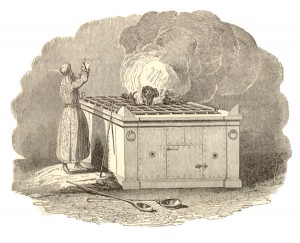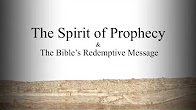 Over the next few weeks I’m going to explore the subject of Bible prophecy and its relationship to the Bible’s holy festivals and their related sacrificial service as described in the Torah (law). Seeing the subject through this contextual lens, I believe, will give you a new appreciation for the beauty and congruency of YHWH’s redemptive plan for mankind (it has for me).
Over the next few weeks I’m going to explore the subject of Bible prophecy and its relationship to the Bible’s holy festivals and their related sacrificial service as described in the Torah (law). Seeing the subject through this contextual lens, I believe, will give you a new appreciation for the beauty and congruency of YHWH’s redemptive plan for mankind (it has for me).
In this series, I hope to show you, there is more to the sacrificial symbolism of the Bible than most have understood and that symbolism points us to the inescapable conclusions that Yeshua (Jesus) is the Messiah promised in the Scripture.
We will start this series by looking at the significance of Yeshua’s fulfillment of the Bible’s holydays. We’ll then dig below the surface to show how these holydays and their associated sacrificial rites provide us with an amazingly congruent picture of the Messiah’s redemptive mission. Finally, in Part III will take that symbolism, shadow, and type and show why it is an integral part of Daniel’s 70 Weeks, the only prophecy in the Bible which gives a specific date for the coming of the Messiah Yeshua.
Bible Prophecy and the Law of Moses
Part I – The Bible’s Holy Days: Pictures of the Messiah
Part II (a) – The Messiah Factors: Numerical Evidence of Yahweh’s Redemptive Plan
Part II (b) – The Messiah Factors: Numerical Evidence of Yahweh’s Redemptive Plan
Part III – Seven, 70, & Sevens: Daniel 9 & the Bible’s Messianic Symbolism
So without further introduction, here is Part I in my exploration of Bible Prophecy and the Law of Moses:
The Bible’s Holy Days: Pictures of the Messiah
Did Yeshua (Jesus) fulfill the law? This is one of the most controversial questions of the church age. Interestingly, both extremes of this discussion often point to the following words of Yeshua as evidence for their position.
Think not that I am come to destroy the law, or the prophets: I am not come to destroy, but to fulfil [pleroo]. 18 For verily I say unto you, Till heaven and earth pass, one jot or one tittle shall in no wise pass from the law, till all be fulfilled. (Matthew 5:17-18)
One extreme says that Yeshua’s death and resurrection fulfilled all the law so that now the church is under a period of grace where no law applies. The other extreme of the argument says that all the law and the prophets have not yet been fulfilled, so the church is still under all 613 commandments of the law.
What if both side are looking at the subject from the wrong perspective? Continue reading

